The Superconducting Maglev is equipped with a braking system capable of safely stopping a train traveling at 311mph. Regenerative braking is normally used for deceleration, but if it becomes unavailable, the Superconducting maglev also has wheel disc brakes and aerodynamic brakes. On the Yamanashi Maglev Line, the braking system has been repeatedly examined on tough scenarios, e.g. an unlikely scenario of having to switch from 311mph operation to wheeled operation, in order to ensure operational safety.
- Normal operation
- Regenerative braking
This system uses linear motors as generators to decelerate the train.
The vehicle’s kinetic energy is converted to electrical energy,
and generated electricity is returned to power conversion equipment
to be reused.
- In emergencies
- Wheel disc braking
This system uses disc braking equipment fitted to
wheels to mechanically decelerate the train.
- In emergencies
- Aerodynamic braking
This system extends air drag panels from vehicle to use air resistance for deceleration.
It gives a particularly significant deceleration
effect when traveling at high speed.
Even if the power goes out, levitation forces keeps the train in the air while it is traveling at high speed. The vehicle comes safely to a stop rather than suddenly falling onto the track. Even if one substation suffers an outage, electricity can be fed from an adjacent substation, providing a high degree of redundancy.
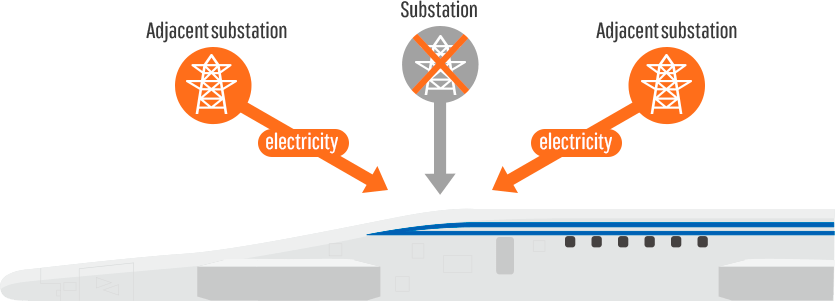
Even if one substation suffers an outage,electricity can be fed from an adjacent substation to keep the train in operation.
The Superconducting Maglev is a quake-resilient system. Its vehicle operates without contact, levitating about 3.9in inside a U-shaped guideway. Magnetic force from levitation and guidance coils keeps the vehicle centered in the guideway, both vertically and horizontally, preventing derailment at the time of an earthquake. The Chuo Shinkansen will have most of its terminal stations (Tokyo, Nagoya and Osaka) as well as most of its routes in tunnels and underground structures. Since earthquake tremors are smaller in underground spaces, the Chuo Shinkansen is resilient to natural disasters. The Earthquake Rapid Alarm System (TERRA-S), used successfully in the Tokaido Shinkansen, will also be adopted to decelerate and stop trains early in case of an earthquake.
Superconducting Maglev's mechanism of
operational safety in earthquakes
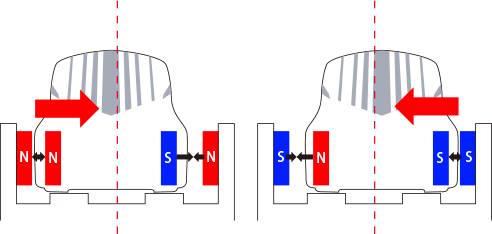
When a train becomes off-center in the guideway, the guideway side further from the train receives attractive force, whereas the side closer to the train receives repulsive force according to the principle of electromagnetic induction, bringing the vehicle back to the center of the guideway at all times without human intervention. The faster the train is operating, the greater this force becomes, delivering greater stability.
Superconducting Maglev’s vehicle is built with non-flammable and flame-retardant materials that meet flammability specifications under a relevant ordinance issued by Japan's Ministry of Land, Infrastructure, Transport and Tourism. Fire extinguishers are deployed in cars for initial fire response. Partition doors are placed at both ends of the trainset, while gangway connections (automatic doors) are provided between individual cars. If a fire breaks out, the train continues to the next stop or outside of a tunnel before stopping, in principle, so as to ensure swift and safe passenger evacuation.

Approximately 86% of the Shinagawa - Nagoya section of the Chuo Shinkansen runs through tunnels. The emergency protocol is, similarly to the Tokaido Shinkansen, for the train to travel through to the next station or outside a tunnel. Even if it becomes inevitable to stop inside a tunnel and have passengers disembark for evacuation, JR Central will have a plan in place to guide and evacuate passengers safely and swiftly.
Evacuation procedure when a train stops
inside a tunnel deep underground

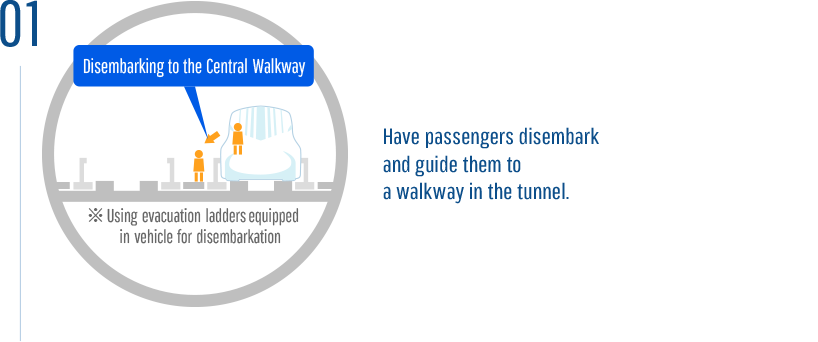
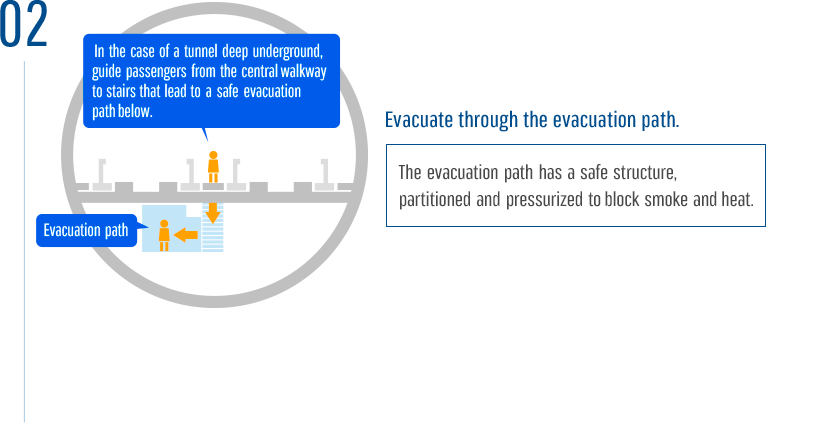
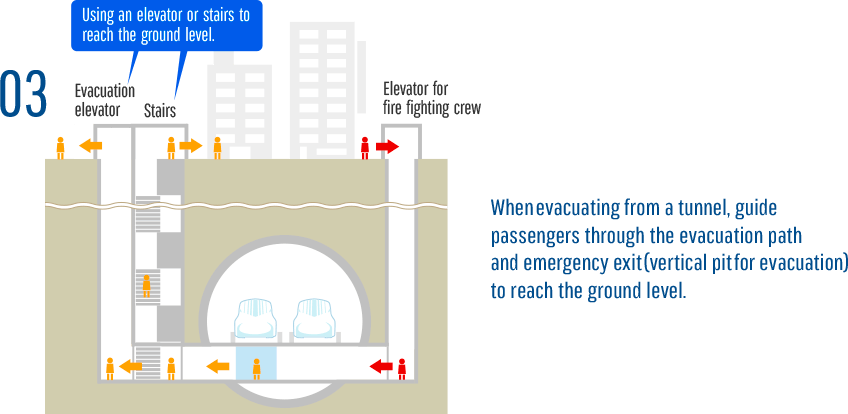
Note: In the case of a fire, passengers are evacuated / guided windward.
At the Yamanashi Maglev Line, we carry out evacuation drills periodically in various scenarios, using actual vehicle facilities.

